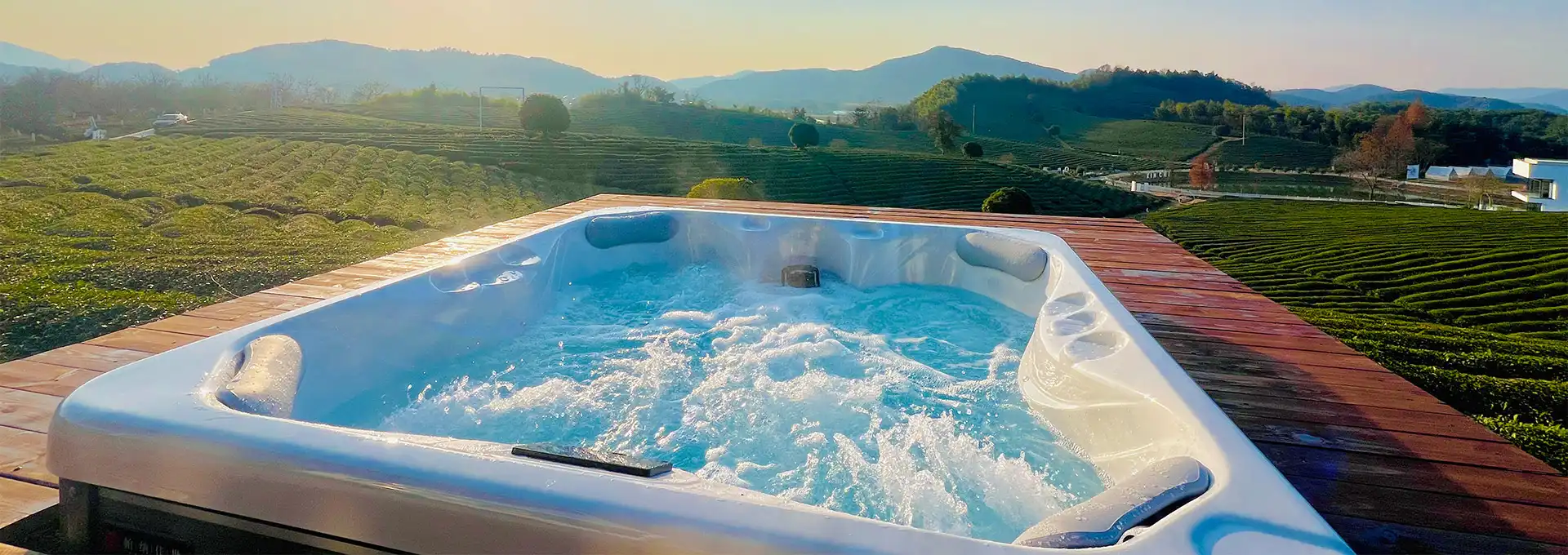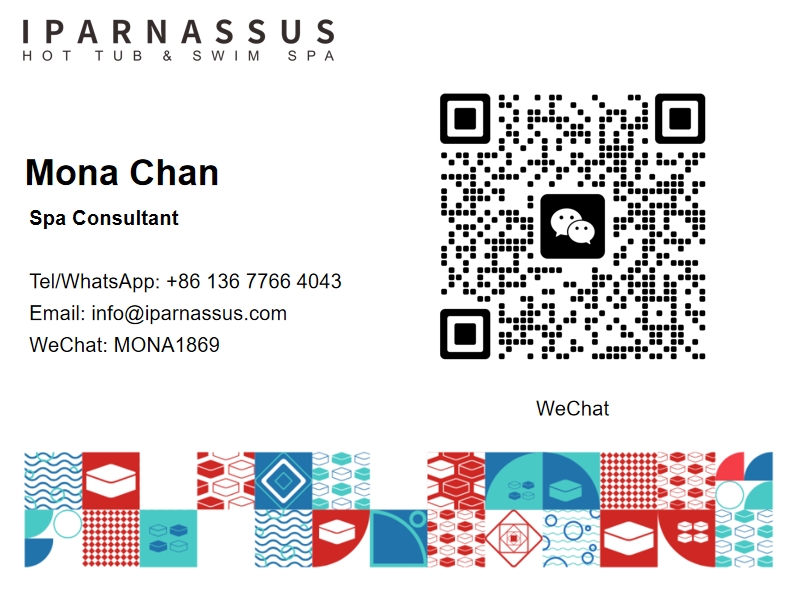How Do You Drain a Swim Spa?
2024-11-04 17:58:03
Draining a 7 person swim spa is an essential maintenance task that helps keep your aquatic exercise space clean, hygienic, and functioning optimally. Whether you're preparing for a deep clean, winterizing your spa, or simply refreshing the water, knowing the proper draining procedure is crucial. This guide will walk you through the process of draining your swim spa efficiently and safely, ensuring that you can maintain your investment for years to come.
What are the steps to drain a swim spa?
Draining a swim spa requires careful steps to avoid damaging the equipment. Here’s a concise guide to help you through the process:
- Preparation: Gather necessary tools, including a submersible pump, garden hose, and possibly a shop vacuum. Check your swim spa's manual for any specific instructions.
- Turn off the power: Ensure safety by disconnecting the spa from its power source, usually by turning off the circuit breaker.
- Locate the drain valve: Find the main drain valve, typically located near the bottom of the spa cabinet. Refer to your owner's manual if needed.
- Connect the hose: Attach a garden hose to the drain valve, directing the other end to your chosen drainage area, while being mindful of local water disposal regulations.
- Open the drain valve: Open the valve to begin draining the water through the hose.
- Use a submersible pump: As the water level decreases and draining slows, use the submersible pump to remove the remaining water more efficiently.
- Remove residual water: Use a shop vacuum or sponges to clear any leftover water from the footwell, jets, and crevices.
- Clean the shell: With the spa empty, clean the interior using a non-abrasive cleaner designed for swim spas to protect the acrylic shell.
- Close the drain valve: After draining and cleaning, securely close the drain valve to prevent leaks when refilling.
Keep in mind that the entire process may take several hours, depending on 7 person swim spa's size and draining method. Plan ahead and avoid leaving the draining spa unattended for long periods.
How often should you drain and refill a swim spa?
The frequency of draining and refilling your swim spa varies based on usage, maintenance, and water quality. Here are some general guidelines:
- Regular Use: If used frequently, drain and refill every 3-4 months to maintain fresh water and easier chemical balance.
- Occasional Use: For infrequent use, you can extend the interval to about 6 months.
- Water Quality Indicators: Persistent clarity issues, unusual odors, or difficulty in maintaining chemical balance may signal the need for a drain, regardless of the schedule.
- Bather Load: More users mean more contaminants, requiring more frequent water changes.
To determine the best draining schedule:
- Test Water Regularly: Monitor total dissolved solids (TDS) levels for indicators of when to change water.
- Monitor Filter Efficiency: If filters need frequent cleaning or replacement, it may be time to change the water.
- Observe Water Clarity: Cloudiness or unpleasant odors despite proper treatment suggest it's time for a refill.
- Consider Usage Patterns: After heavy use, such as pool parties, draining sooner might be necessary.
Establishing a regular draining schedule is essential for the longevity of your swim spa and a hygienic user environment. Proactive water changes can prevent common quality issues and extend the lifespan of your 7 person swim spa's components.
Can you use the swim spa water to irrigate your garden?
Repurposing swim spa water for garden irrigation can be beneficial due to the large volume of water, but there are important factors to consider:
- Chemical Content: Swim spa water often contains chlorine or bromine, which can harm plants in high concentrations. Allowing the water to sit for several days under sunlight can help dissipate chlorine.
- Salt Systems: If using a salt chlorination system, the water may have a high salt content. Many plants are sensitive to salt, so this can be damaging.
- pH Levels: Swim spa water typically has a pH of 7.2 to 7.8, which is slightly alkaline. Most plants prefer slightly acidic soil, so using this water frequently could alter soil pH over time.
- Total Dissolved Solids (TDS): High TDS levels can accumulate in the soil and potentially harm plants if used repeatedly.
- Local Regulations: Check local laws regarding the disposal of pool or 7 person swim spa water before using it for irrigation.
If you choose to use swim spa water, follow these best practices:
- Allow the Water to Sit: Let the drained water sit in a tank for a few days to reduce chlorine levels.
- Dilute the Water: Mix spa water with fresh water to dilute chemicals and TDS levels.
- Choose Appropriate Plants: Use the water on hardy, established plants and avoid edible crops.
- Rotate Watering Sources: Alternate with fresh water to prevent chemical buildup in the soil.
- Monitor Your Plants: Watch for signs of stress and adjust your practices as needed.
- Consider a Water Treatment System: Invest in a treatment system if you frequently reuse spa water.
While it's possible to use swim spa water for irrigation under certain circumstances, it's important to approach this practice with caution. The potential risks to your plants and soil should be carefully weighed against the benefits of water conservation. In many cases, it may be more prudent to dispose of the water as recommended by your local guidelines and use fresh water for your garden. If water conservation is a priority, consider implementing other methods such as rainwater harvesting or drought-resistant landscaping to reduce overall water 7 person swim spa.
For more information on hot tub installations and to find out more about our products, please feel free to contact us at info@iparnassus.com.
References
1.Swim University. (2021). How to Drain and Clean a Hot Tub.
2.Master Spas. (2022). How to Drain a Swim Spa.
3.Hydropool. (2023). How to Drain Your Hot Tub.
4.Aqua Magazine. (2020). Best Practices for Draining and Refilling Spas.
5.SpaCyclopedia. (2022). How Often Should You Change Hot Tub Water?
6.PHTA. (2021). Pool & Hot Tub Alliance Standards.
7.EPA. (2023). Water Conservation at EPA.
8.University of California Agriculture and Natural Resources. (2022). Using Graywater in the Home Garden.
9.Colorado State University Extension. (2021). Irrigation Water Quality Criteria.
10.Royal Horticultural Society. (2023). Water: collecting, recycling, and storing.
Send Inquiry
Related Industry Knowledge
- Does Hot Tub Make You Gain Weight?
- Does a Swim Spa Add Value?
- Can a Swim Spa Double as a Hot Tub for Year-Round Relaxation and Exercise?
- Which Mode Saves the Most Energy in My Swim Spa?
- How to Fill a Hot Tub with Well Water?
- How is a Outdoor Hot Tub?
- How to construct a vault for underground swim spa?
- How to Lower Stabilizer in Hot Tub?
- Can You Put a Hot Tub on Gravel?
- Can You Put a Bath Bomb in a Hot Tub?



